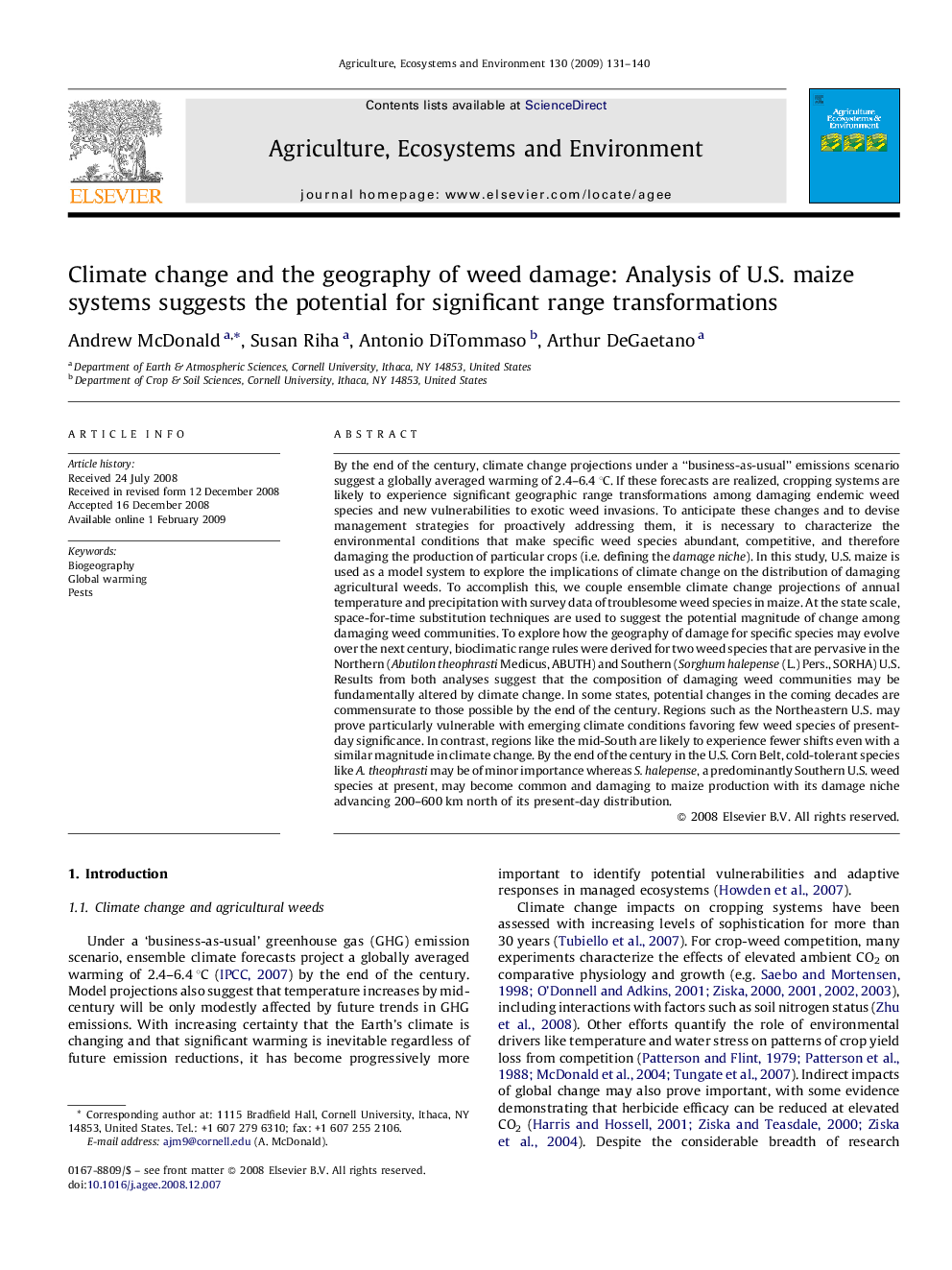| کد مقاله | کد نشریه | سال انتشار | مقاله انگلیسی | نسخه تمام متن |
|---|---|---|---|---|
| 2415280 | 1552128 | 2009 | 10 صفحه PDF | دانلود رایگان |

By the end of the century, climate change projections under a “business-as-usual” emissions scenario suggest a globally averaged warming of 2.4–6.4 °C. If these forecasts are realized, cropping systems are likely to experience significant geographic range transformations among damaging endemic weed species and new vulnerabilities to exotic weed invasions. To anticipate these changes and to devise management strategies for proactively addressing them, it is necessary to characterize the environmental conditions that make specific weed species abundant, competitive, and therefore damaging the production of particular crops (i.e. defining the damage niche). In this study, U.S. maize is used as a model system to explore the implications of climate change on the distribution of damaging agricultural weeds. To accomplish this, we couple ensemble climate change projections of annual temperature and precipitation with survey data of troublesome weed species in maize. At the state scale, space-for-time substitution techniques are used to suggest the potential magnitude of change among damaging weed communities. To explore how the geography of damage for specific species may evolve over the next century, bioclimatic range rules were derived for two weed species that are pervasive in the Northern (Abutilon theophrasti Medicus, ABUTH) and Southern (Sorghum halepense (L.) Pers., SORHA) U.S. Results from both analyses suggest that the composition of damaging weed communities may be fundamentally altered by climate change. In some states, potential changes in the coming decades are commensurate to those possible by the end of the century. Regions such as the Northeastern U.S. may prove particularly vulnerable with emerging climate conditions favoring few weed species of present-day significance. In contrast, regions like the mid-South are likely to experience fewer shifts even with a similar magnitude in climate change. By the end of the century in the U.S. Corn Belt, cold-tolerant species like A. theophrasti may be of minor importance whereas S. halepense, a predominantly Southern U.S. weed species at present, may become common and damaging to maize production with its damage niche advancing 200–600 km north of its present-day distribution.
Journal: Agriculture, Ecosystems & Environment - Volume 130, Issues 3–4, April 2009, Pages 131–140